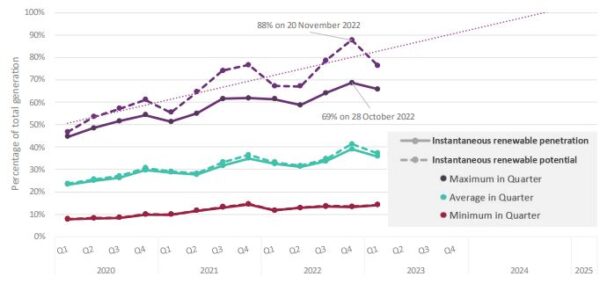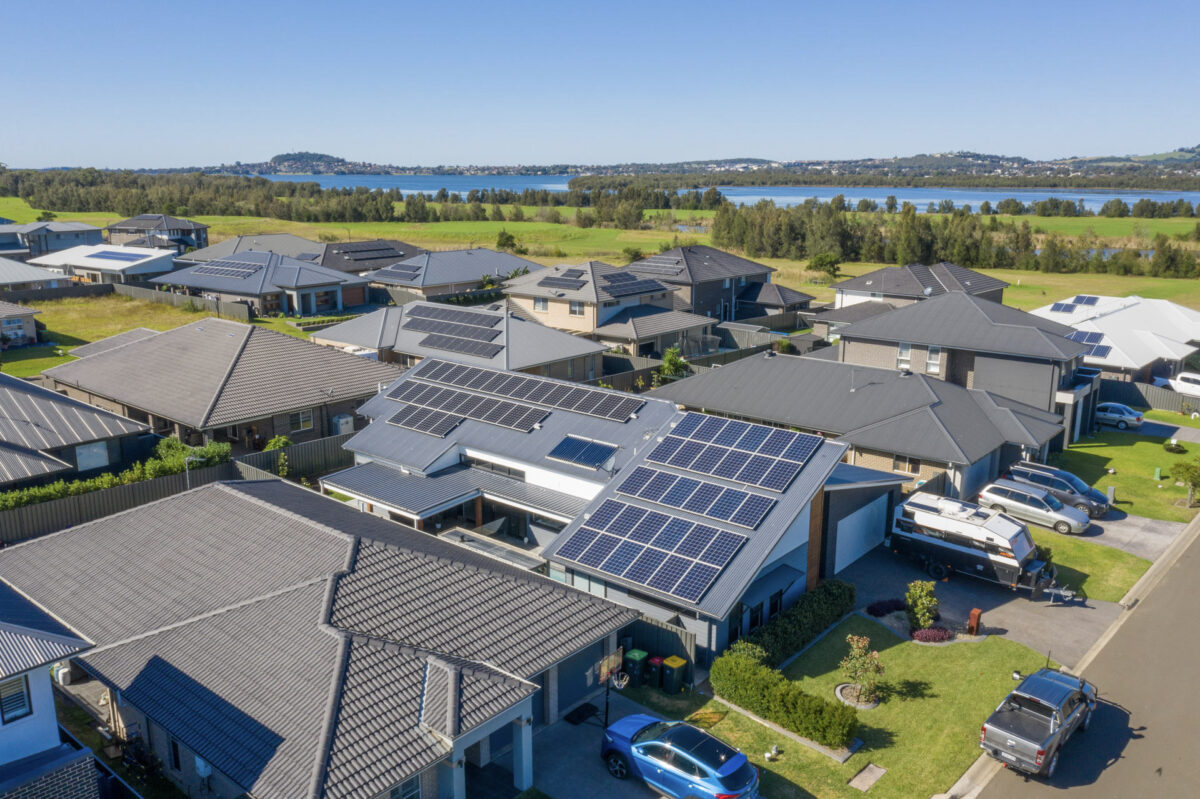The latest edition of the Australian Energy Market Operator’s (AEMO) engineering roadmap identifies 80 actions the operator intends to progress in the 2023–24 financial year as it works to ready the National Electricity Market (NEM) to operate securely and reliably at times without fossil fuels.
The NEM is rapidly transitioning to higher penetrations of renewables with the ongoing exit of coal-fired generation, development and connection of new utility-scale generation and energy storage, and sustained growth in distributed energy resources (DER).
The NEM has delivered several renewables milestones in the past year including reaching 68.7% instantaneous penetration of renewables on 28 October 2022.
AEMO said the rapid growth of renewables suggests there will be enough resource potential to reach 100% of grid demand, for a small number of dispatch periods, as early as 2025.
While the intent is to have the system ready for the first 100% instantaneous renewables period, AEMO Future Energy Systems Manager Chris Davies said the challenge is managing the high penetrations of variable, inverter-based renewables like wind and solar generation, which make up the majority of new renewables coming into the NEM.

AEMO
“Readiness for 100% instantaneous renewables is a critical enabler for being able to operate the power system regularly with high penetrations of renewables, in turn supporting the transition to a net zero energy system,” he said.
“The transition requires a concerted effort across industry, and this report summarises the major engineering and operational readiness activities that AEMO intends to progress in this next financial year.”
The priority actions outlined in the report focus on four key areas, including accelerating efforts to support new technologies such as grid-forming inverters to address system needs, ongoing studies of the power system, and building operational readiness.
The fourth focus area centres on enabling higher penetrations of DER including rooftop solar, small-scale batteries, and electric vehicles (EVs) with AEMO saying it expects the trend for a significant increase in the number of DER connecting in the NEM to continue.
“So it is essential the right frameworks are in place to address existing and potential challenges,” the operator said.
The engineering roadmap, which builds on the 2022-23 report, points to the roll out of new compliance regulations for small-scale DER standards, the development of coordination and aggregation capability, and potential new connection requirements for projects of less than 5 MW.
“This is a critical area of focus because poor integration can reduce the visibility, predictability, and controllability of the power system, posing a risk to power system security,” AEMO said.
AEMO said another key focus will be on enabling new technologies to address system needs, including accelerating efforts to support the development of grid-forming inverter technology.
“A range of technologies will be needed to meet future power system needs, delivering capabilities to replace the essential system services that will no longer be available from large synchronous generators when they are offline,” the report says.
AEMO has called for industry input on the Engineering Roadmap to 100% Renewables program, which will be open to stakeholder feedback until 31 July 2023.
This content is protected by copyright and may not be reused. If you want to cooperate with us and would like to reuse some of our content, please contact: editors@pv-magazine.com.









By submitting this form you agree to pv magazine using your data for the purposes of publishing your comment.
Your personal data will only be disclosed or otherwise transmitted to third parties for the purposes of spam filtering or if this is necessary for technical maintenance of the website. Any other transfer to third parties will not take place unless this is justified on the basis of applicable data protection regulations or if pv magazine is legally obliged to do so.
You may revoke this consent at any time with effect for the future, in which case your personal data will be deleted immediately. Otherwise, your data will be deleted if pv magazine has processed your request or the purpose of data storage is fulfilled.
Further information on data privacy can be found in our Data Protection Policy.